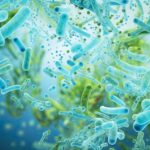• Microbiota protection
• The benefits of legumes
What is already known on this topic
Severe malnutrition poses a major threat to child health, especially in sub-Saharan Africa and South Asia. Malnutrition is a leading cause of death in children under five years of age and increases their risk of developing life-threatening conditions, including diarrhea and infections such as pneumonia. Although malnourished children are usually treated with milk-based formulas to restore weight, many do not survive.What this research adds
In a small pilot trial, researchers recruited 58 hospitalized children with severe malnutrition and gave them either a conventional feed, a feed containing inulin — a starch substance found in plants — or a feed containing cowpea flour. The children were also treated with antibiotics. All feeds resulted in comparable weight gain after one week, but the cowpea feed also protected the gut microbiota from the damage associated with antibiotic treatments. Although there was limited difference in mortality between the three groups, children who died had a less diverse gut microbiota and more intestinal problems than infants who survived.Conclusion
The findings suggest that cowpea-based foods protect the gut microbiota, helping malnourished children to grow stronger.
Malnutrition is a leading cause of death in children under five years of age and increases their risk of developing life-threatening conditions, including diarrhea and infections such as pneumonia. Now, a pilot trial suggests that pea-based foods could help to improve the absorption of nutrients, helping malnourished children to gain weight.
The findings, published in Cell Reports Medicine, could have implications for managing and treating children with malnutrition. “We have been able to show that legume-enriched feeds are well tolerated by these very sick children, and they may also protect their ‘good’ gut microbes, compared to traditional feeds,” says study senior co-author Gary Frost at Imperial College. “Our hope is that this kind of intervention will help them to grow stronger by enabling their bodies to absorb more of the nutrients from the feed.”
Severe malnutrition poses a major threat to child health, especially in sub-Saharan Africa and South Asia. Although malnourished children are usually treated with milk-based formulas to restore weight, many do not survive.
Previous studies have shown that dietary fiber can help to increase nutrient absorption in the gut. So, a team of researchers led by Frost and his colleague Kathryn Maitland developed a feed fortified with cowpea — an important grain legume in East and West African countries — and tested it in a small trial.
Microbiota protection
The researchers recruited 58 hospitalized children with severe malnutrition in Uganda. The infants, aged 6 months to 5 years, received either a conventional feed, a feed containing inulin — a starch substance found in plants — or a feed containing cowpea flour. The children, who were followed up for 28 days, were also treated with antibiotics.
After one week, the researchers measured the children’s weight and collected fecal samples to analyze the gut microbiota composition. All feeds resulted in comparable weight gain, but the cowpea feed also limited the loss of gut microbiota diversity associated with antibiotic treatments.
After 28 days, 12 children had died. Although the difference in mortality between the three groups was limited, children who died had a less diverse gut microbiota and more intestinal problems than infants who survived.
Children who died had higher levels of Enterobacteriaceae in their stool than those who survived. They also had lower levels of microbial metabolites such as short chain fatty acids, which suggests that the microbiota couldn’t function properly.
The benefits of legumes
The findings show that legume-based feeds reduce the loss of microbiota diversity caused by antibiotics, and may have positive effects on gut integrity. The researchers caution that the study is small, but note that the findings may be important.
“The role the gut actively plays in the pathology of severe malnutrition has not been fully appreciated, and there are multiple parameters that need fixing. Fortifying feeds with legumes can go some way towards that,” Maitland says. “Many of these children may receive multiple antibiotics, which kills the microbiota, leaving only the microbes that are bad for human health, and these legume-enriched feeds may actually help to resist that.”
The team now plans to test pea-based feeds in a larger number of children with severe malnutrition. Because cowpea can be grown in Africa, the researchers note that producing pea flour locally could help to depend less on expensive feeds produced in other countries.











